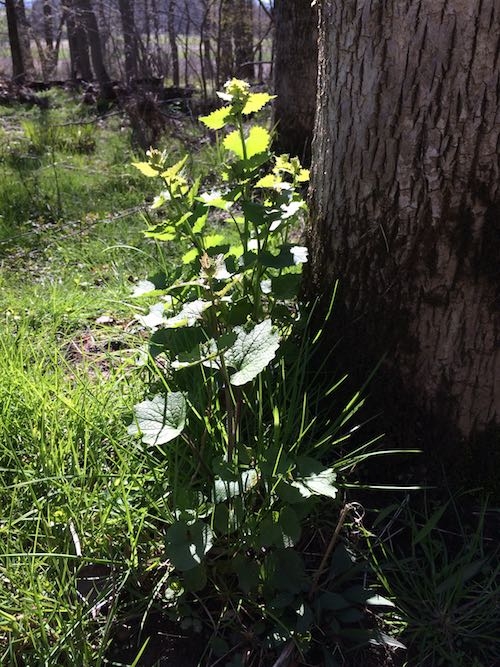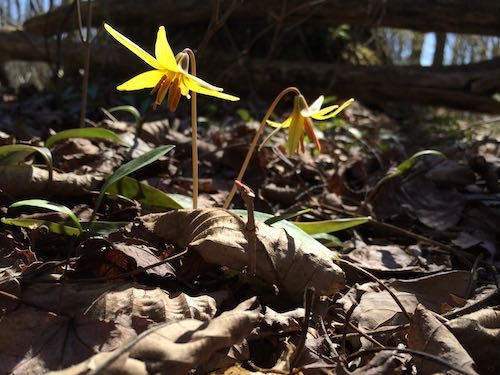Spring Projects: What are we up to?
By Daniel Barringer, Preserve Manager
Spring is here, sort of, but we’re not mowing lawns or trails yet. We were getting set last week to start a huge project at Green Hills: seeding 90 acres of former farm fields to grasslands. Here Aubrey is calibrating the seeder; David Casteneda and Sean Quinn delivered it (and the Gywnedd tractor—thanks Tom!) and helped with the calibrating. Without removing the tractor and seeder from the trailer, we took off the tie-down chains and jacked up the right wheel.

Fifty-nine turns of the wheel equals 1/20 of an acre, so the seed that has dropped into the baggies is weighed and multiplied to obtain the right rate of seeding (~11 pounds/acre of native grass and wildflower seed, ~30 pounds/acre of oats cover crop).
When we got to Green Hills we found that the soil is too wet for the seeder to work well—and that was before the recent rains (and snow). So we’re waiting for the ground to dry out and hope to spend a lot of quality time in the tractor seat in the near future.
In the meantime we have also been waiting for ideal conditions for prescribed fire at various preserves—and that too has been scarce. But with experience comes the knowledge: we don’t control the weather.
With these projects on hold I’ve had some extra time this spring to work on invasives at Crow’s Nest and Green Hills. At the latter we worked on removing callery pear (Pryus calleryana), shub honeysuckle (Lonicera spp.), multiflora rose (Rosa multiflora), autumn olive (Eleagnus umbellata), and privet (Ligustrum vulgare).
Back at Crow’s Nest we have been brush cutting and spraying multiflora rose and have started our garlic mustard (Alliaria petiolata) efforts (photo below).

To my surprise, we’ve had some successes controlling garlic mustard in small parts of the preserve (surprise because the numbers look so daunting). We started it as an experiment—what would it take to accomplish controlling it in this (limited) space? A few years of a combination of pulling it and spraying it has paid off; while we still have plenty of it overall there are places where annual management of it has become quick and relatively painless. And the payoff has also been big: nodding trillium (Trillium cerium) showed up in one place where it previously was absent.
What are we managing for that the garlic mustard interferes with? A diversity of spring ephemeral wildflowers such as trout lily (Erythronium americanum, below), spring beauties (Claytonia virginica), and wood anemone (Anemone quinquifolia) among many others. And since garlic mustard also contains a natural fungicide that interferes with the mycorrhizal fungi that our native plants depend on, it negatively affects even the existing forest trees. (This is why pulling, bagging, and removing from the woods is the best way to limit the effects of garlic mustard.)

We do have opportunities left this spring to pull garlic mustard, particularly in the woods around the visitor center. We don’t have an organized garlic mustard pull day planned but if you’d like to come by to do some please let us know. It just takes a flexible back and willing hands—it’s very satisfying work!
